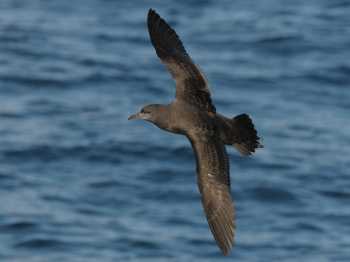Brendon Dunphy (School of Biological Sciences, The University of Auckland, New Zealand) and colleagues have published in the journal Marine Ecology Progress Series on aspects of the diving physiology of three New Zealand burrowing procellariiform seabirds.
The paper’s abstract follows:
“Within breath-hold diving endotherms, procellariiform seabirds present an intriguing anomaly as they regularly dive to depths not predicted by allometric models. How this is achieved is not known as even basic measures of physiological diving capacity have not been undertaken in this group. To remedy this we combined time depth recorder (TDR) measurements of dive behaviour with haematology and oxygen store estimates for 3 procellariiform species (common diving petrels Pelecanoides urinatrix urinatrix; grey-faced petrels Pterodroma macroptera gouldi; and sooty shearwaters Puffinus griseus) during their incubation phase. Among species, we found distinct differences in dive depth (average and maximal), dive duration and dives h−1, with sooty shearwaters diving deeper and for longer than grey-faced petrels and common diving petrels. Conversely, common diving petrels dove much more frequently, albeit to shallow depths, whereas grey-faced petrels rarely dived whatsoever. Such differences in dive behaviour were reflected in haematological parameters, with sooty shearwaters having higher red blood cell counts and haematocrit (Hct) values compared to common diving and grey-faced petrels; whereas common diving petrels had significantly lower Hct but possessed higher haemoglobin concentrations per cell and greater respiratory oxygen stores than both sooty shearwaters and grey-faced petrels. Such results provide the first insights into the physiological traits underpinning procellariiform dive behaviour, and confirm the trend for deep-diving seabirds to have proportionally lower blood and respiratory oxygen stores than shallow divers.”

Sooty Shearwater, photograph by John Graham
Reference:
Dunphy, B.J., Taylor, G.A., Landers, T.J., Sagar, R.L., Chilvers, B.L., Ranjard, L. & Rayner, M.J. 2015. Comparative seabird diving physiology: first measures of haematological parameters and oxygen stores in three New Zealand Procellariiformes. Marine Ecology Progress Series 523: 187-198.
John Cooper, ACAP Information Officer, 5 April 2015

 English
English  Français
Français  Español
Español